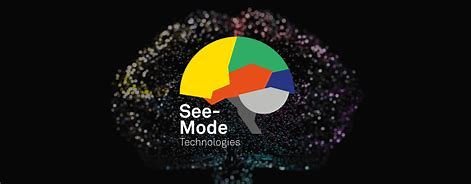See-Mode Technologies Receives FDA Clearance for AI-Powered Thyroid Ultrasound Analysis Software
18 September 2024 | Wednesday | News

See-Mode Technologies, a global innovator in AI for ultrasound imaging, announced the receipt of 510(k) clearance from the U.S. Food and Drug Administration (FDA) for their thyroid ultrasound analysis and reporting software.
See-Mode's AI solution aims to reduce reporting time and variation in delivery of care for thyroid ultrasound. The software detects nodules in single or multinodular thyroid ultrasound images, and automatically classifies each nodule in line with the American College of Radiology's (ACR) TI-RADS rating systems. A complete worksheet is automatically generated and preliminary impressions are sent to radiology reporting systems after clinician review and approval. Existing CPT codes relevant to the use of AI for analysis of thyroid ultrasound also provide greater reimbursement opportunities.
This is the first FDA-cleared product for both detection and diagnosis (CADe/x) of thyroid ultrasound. See-Mode differentiates its thyroid product with the level of automation that it offers, including automatic detection and characterization of thyroid nodules without manual user input, while enabling the clinicians to review and amend the AI outputs quickly before finalizing the report. The product also streamlines reporting of follow-up thyroid studies, addressing a significant pain point and time-consuming task for radiologists.
Dr. Sadaf Monajemi, Co-founder of See-Mode, stated: "The results of a multi-reader multi-case (MRMC) study, that formed part of the FDA submission, showed improvement in radiologist performance with the aid of See-Mode. We observed that See-Mode enhanced the performance of radiologists in nodule localization, characterization, and ACR TI-RADS level agreement, leading to improved differentiation between benign and malignant thyroid nodules."
Dr. Milad Mohammadzadeh, Co-founder of See-Mode, added, "We are proud to receive FDA clearance for our thyroid ultrasound solution. By bringing AI into routine clinical practice, we aim to reduce the reporting time and inter-operator variability that exists in thyroid ultrasound."
Most Read
- Top 25 Biotech & Biopharma Leaders in Sustainable Innovation, 2025
- China’s Biopharma Dealmaking Surges in H1 2025, Driven by Record Licensing and Oncology Focus
- Chikungunya in China: How a “Forgotten” Arbovirus Found the Perfect Storm
- How Innovation Gaps in Biopharma Raise New Safety Concerns
- Smart Implants and the Future of Musculoskeletal Injury Treatment
- How Ethical Gaps in Psychiatry Could Undermine Biopharma Progress
- The Evolving Landscape of Women’s Health Innovation in the Asia-Pacific
- Using NLP-Driven Decision Support in Emergency Health Assistance
- Taiwan Steps Into the Global Spotlight With a New Cancer Therapy
- The Role of Unique Device Identification (UDI) in Tracing Medical Device Safety
- The Importance of a Patient’s Mental Health During Clinical Trials
Bio Jobs
- The State of Biotech and Life Science Jobs in Asia Pacific – 2025
- Avantor’s New CEO Ligner Aims to Unlock Global Potential and Deliver Shareholder Value
- AstraZeneca Commits $50 Billion to U.S. Expansion by 2030 in Biggest-Ever Global Investment
- Thermo Fisher, SAMRC, and South Africa’s Department of Science and Innovation Launch CATIR to Nurture Next-Gen Scientists
- Cube Biotech Appoints Former Sartorius CEO Dr. Joachim Kreuzburg to Board of Directors
- FDA’s AI Transition Marks a Turning Point in Drug Review: Industry Faces Pressure to Adapt Amid 20% Workforce Cut
- WuXi XDC Completes Mechanical Build of Singapore Bioconjugate Manufacturing Hub
News
Editor Picks











